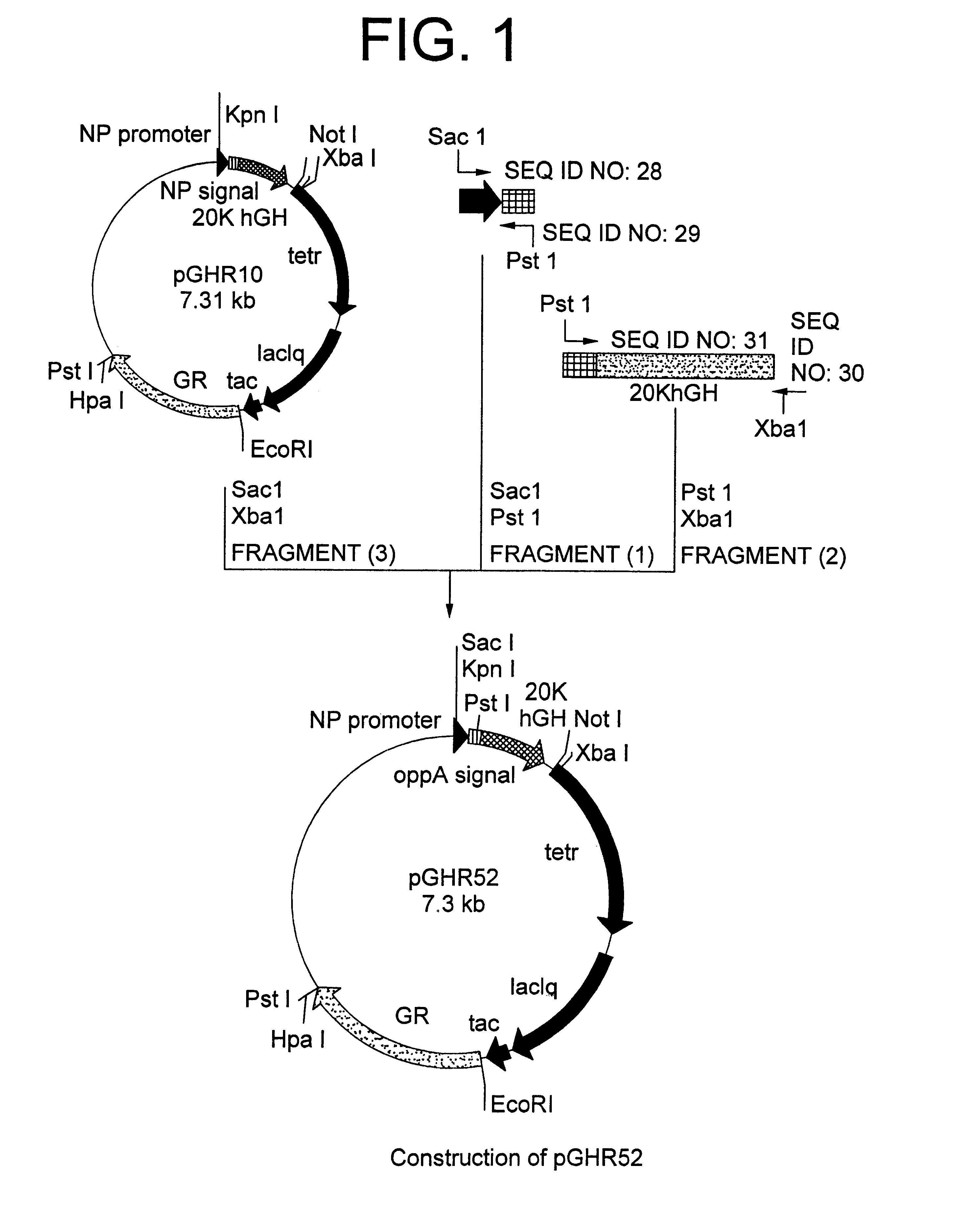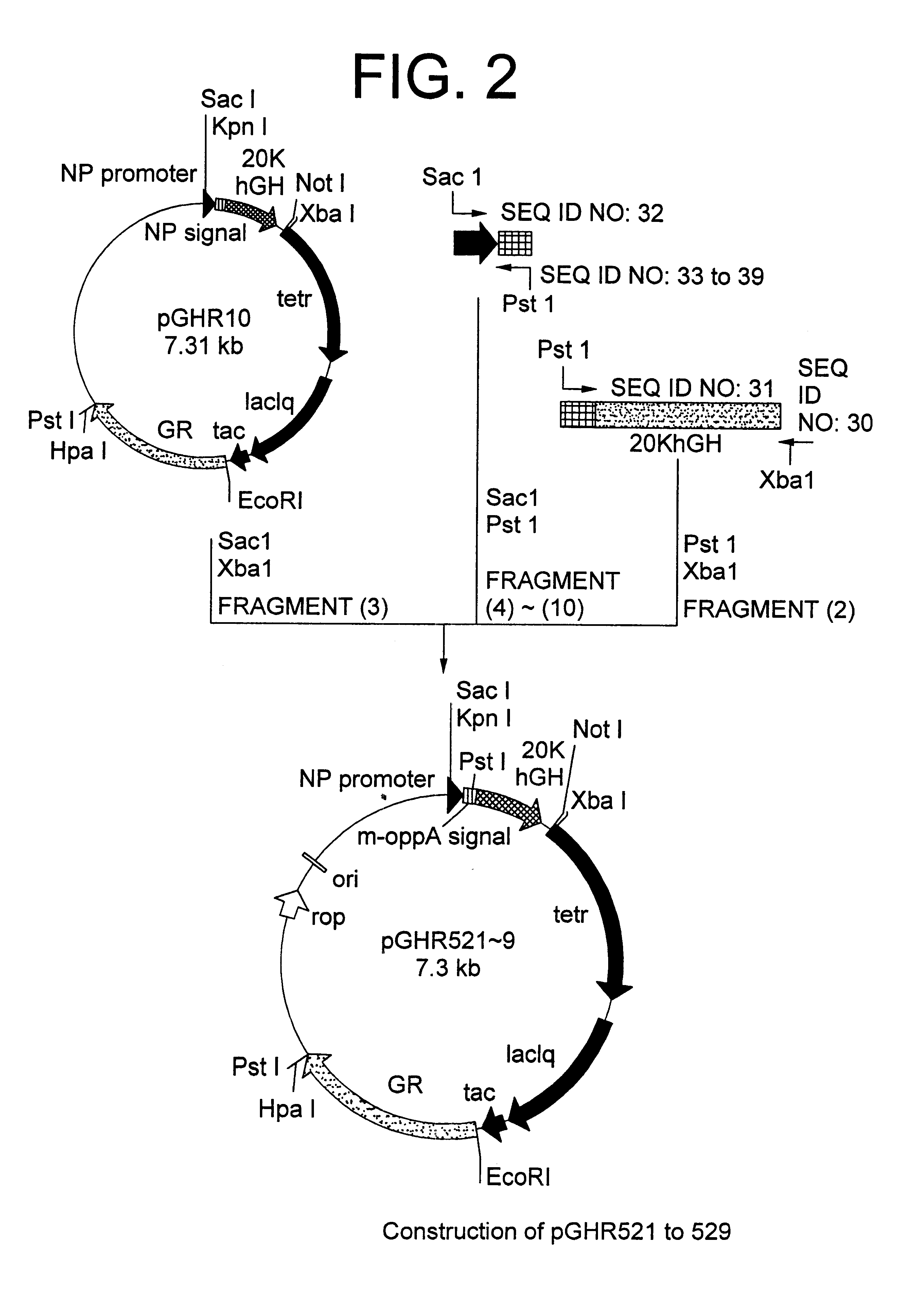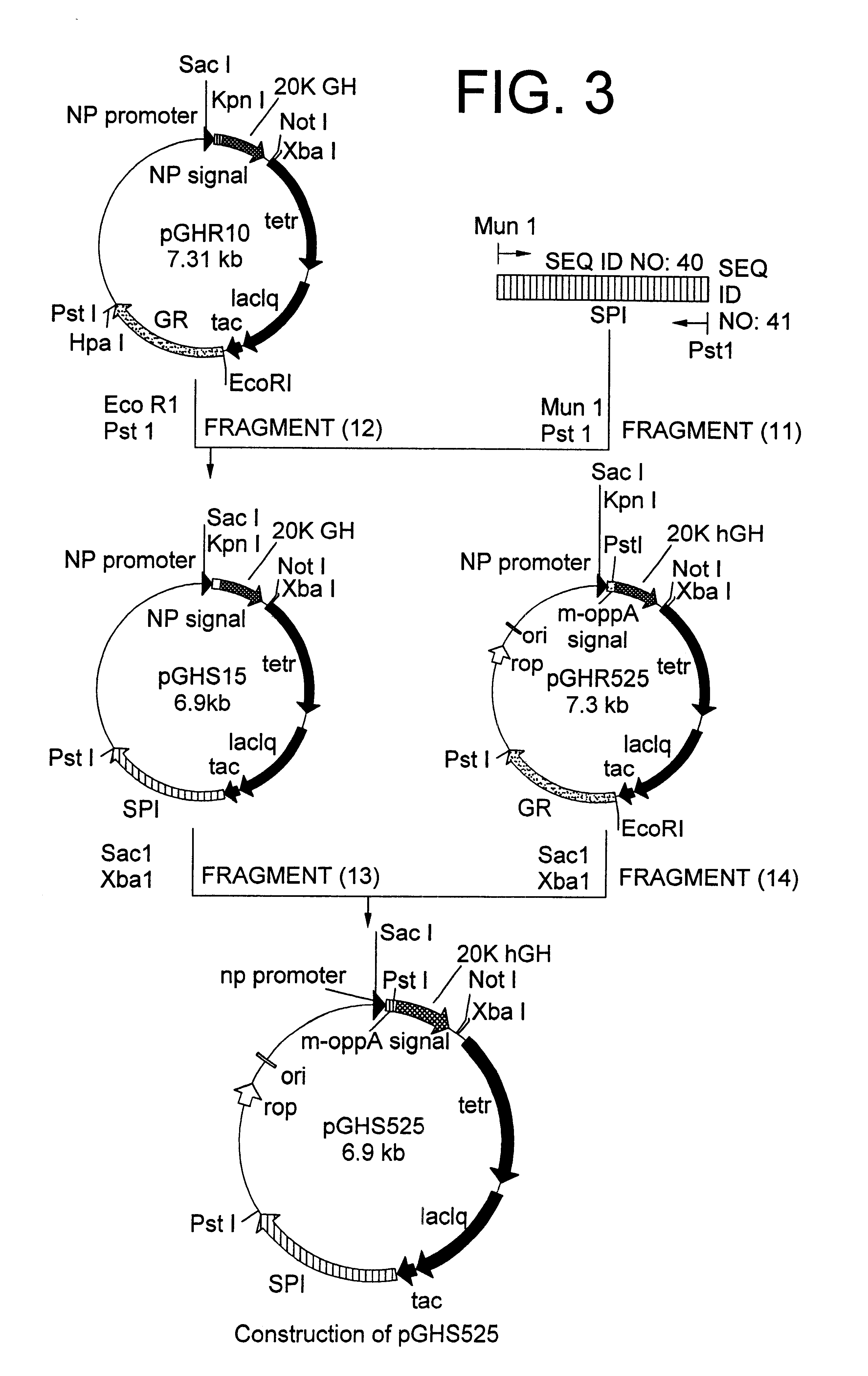Method for secretory production of human growth hormone
a technology of growth hormone and secretory production, which is applied in the direction of peptides, dna/rna fragmentation, medical preparations, etc., can solve the problems of ineffective protein production methods of intracellular expression methods, high cost, and inability to meet the requirements of high-tech production methods
- Summary
- Abstract
- Description
- Claims
- Application Information
AI Technical Summary
Benefits of technology
Problems solved by technology
Method used
Image
Examples
example 1
Study on Usefulness of OppA Secretion Signal
[1] Construction of 20K hGH Secretion Plasmid Containing OppA Secretion Signal Gene
Oligonucleotides of SEQ ID NO: 28 and SEQ ID NO: 29 were made into double stranded chains by. PCR (Polymerase Chain Reaction) and the resulting chains were cleaved with restriction endonucleases SacI and PstI to obtain a DNA fragment (1) encoding the promoter derived from Bacillus amyloliquefaciens neutral protease and the front-half of OppA secretion signal. Using secretion plasmid pGHR10 derived from strain MT-10765 (FERn BP-5020) described in Japanese Patent Laid-open (Kokai) No. 322586 / 96 as a template, a DNA fragment encoding the back-half of OppA secretion signal and 20K hGH was amplified by PCR using primers of SEQ ID NO: 30 and SEQ ID NO: 31. The resultant PCR product was cleaved with restriction enzymes PstI and XbaI to obtain a DNA fragment (2). Further, secretion plasmid pGHR10 was cleaved with restriction enzymes SacI and XbaI to obtain a vector-...
example 2
Study on Usefulness of Signal Peptidase 1
[1] Construction of 20K hGH Secretion Plasmid for Co-expression of Signal Peptidase 1 Using Modified OppA Secretion Signal
From the chromosomal gene of E. coli W3110, a DNA fragment encoding signal peptidase 1 was amplified by PCR using oligonucleotides of SEQ ID NO: 40 and SEQ ID NO: 41. The resultant PCR product was cleaved with restriction enzymes MunI and PstI to obtain a DNA fragment encoding signal peptidase 1 (11). This fragment (11) and a vector side fragment (12) which was created by cleaving pGHR10 described in Japanese Patent Laid-open (Kokai) No. 322586 / 96 with restriction enzymes EcoRI and PstI were mixed and ligated by an ordinary method, then used for transformation of E. coli W3110 (ATCC 27325) to obtain secretion plasmid pGHS15 (FIG. 3). The resulting pGHS15 was cleaved with restriction enzymes SacI and XbaI to obtain a vector side fragment (13). Further, recombinant plasmid pGHR525 obtained in Example 1 was cleaved with restr...
example 3
Evaluation of 20K hGH Productivity in Altered Culture Conditions
Cells of E. coli transformants W3110 / pGHR525 (MT-10853 (FERM BP-6291)) constructed in [4] of Example 1 and W3110 / pGHS525 (MT-10852 (FERM BP-6290)) and the known strain W3110 / pGHR10 (MT-10765 (FERM BP-5020)) described in Japanese Patent Laid-open (Kokai) No. 322586 / 96 (or European Patent Publication No. 0735140), for comparison, were cultured in an altered medium and the resultant cultures were evaluated.
Cells of each transformant strain were cultured on an LB agar medium supplemented with 10 .mu.g / ml tetracycline at 30.degree. C. for 18 hours. The resultant cells were cultured in a liquid medium (20 g / L polypeptone, 10 g / L yeast extract, 15 g / L succinic acid, 36 g / L glycerol and 30 mg / L tetracycline) at 30.degree. C. for 42 hours. After culturing, the periplasm fraction containing secreted and accumulated 20K hGH was recovered from the cells by the osmotic pressure shock method, and the 20K hGH concentration in-the peri...
PUM
| Property | Measurement | Unit |
|---|---|---|
| concentration | aaaaa | aaaaa |
| hydrophobic | aaaaa | aaaaa |
| physiological concentration | aaaaa | aaaaa |
Abstract
Description
Claims
Application Information
 Login to View More
Login to View More - R&D
- Intellectual Property
- Life Sciences
- Materials
- Tech Scout
- Unparalleled Data Quality
- Higher Quality Content
- 60% Fewer Hallucinations
Browse by: Latest US Patents, China's latest patents, Technical Efficacy Thesaurus, Application Domain, Technology Topic, Popular Technical Reports.
© 2025 PatSnap. All rights reserved.Legal|Privacy policy|Modern Slavery Act Transparency Statement|Sitemap|About US| Contact US: help@patsnap.com



